Individually, I'd agree, but that many? There's no way that won't sound a bit cloudy.Have to disagree. Those are way better looking than I expected. I realize there's a lot of competition at that price point, but those off axis(what they were designed for) spins look really great to my eye. There are a bunch of really high Q resonances, but I question the audibility of those, and the overall shape at 10-15% looks near SOTA for passive solutions at that price point and size.
Which passive speakers of similar size/price do you see as noticeably better than this? R3 is one I can maybe think of(note Erin's review of that seems is resolution), but that's the only one I can think of, and I would guess it can't play as loud.
-
WANTED: Happy members who like to discuss audio and other topics related to our interest. Desire to learn and share knowledge of science required. There are many reviews of audio hardware and expert members to help answer your questions. Click here to have your audio equipment measured for free!
You are using an out of date browser. It may not display this or other websites correctly.
You should upgrade or use an alternative browser.
You should upgrade or use an alternative browser.
MoFi SourcePoint 10 - Review & Measurements by Erin
- Thread starter VintageFlanker
- Start date
cavedriver
Addicted to Fun and Learning
Is it me or is the R3 horizontal dispersion actually inferior to the SP10's? And by inferior I mean that the SP10's dispersion is more even over the frequency range of ~3k to ~12k:
R3 from Erin's review:
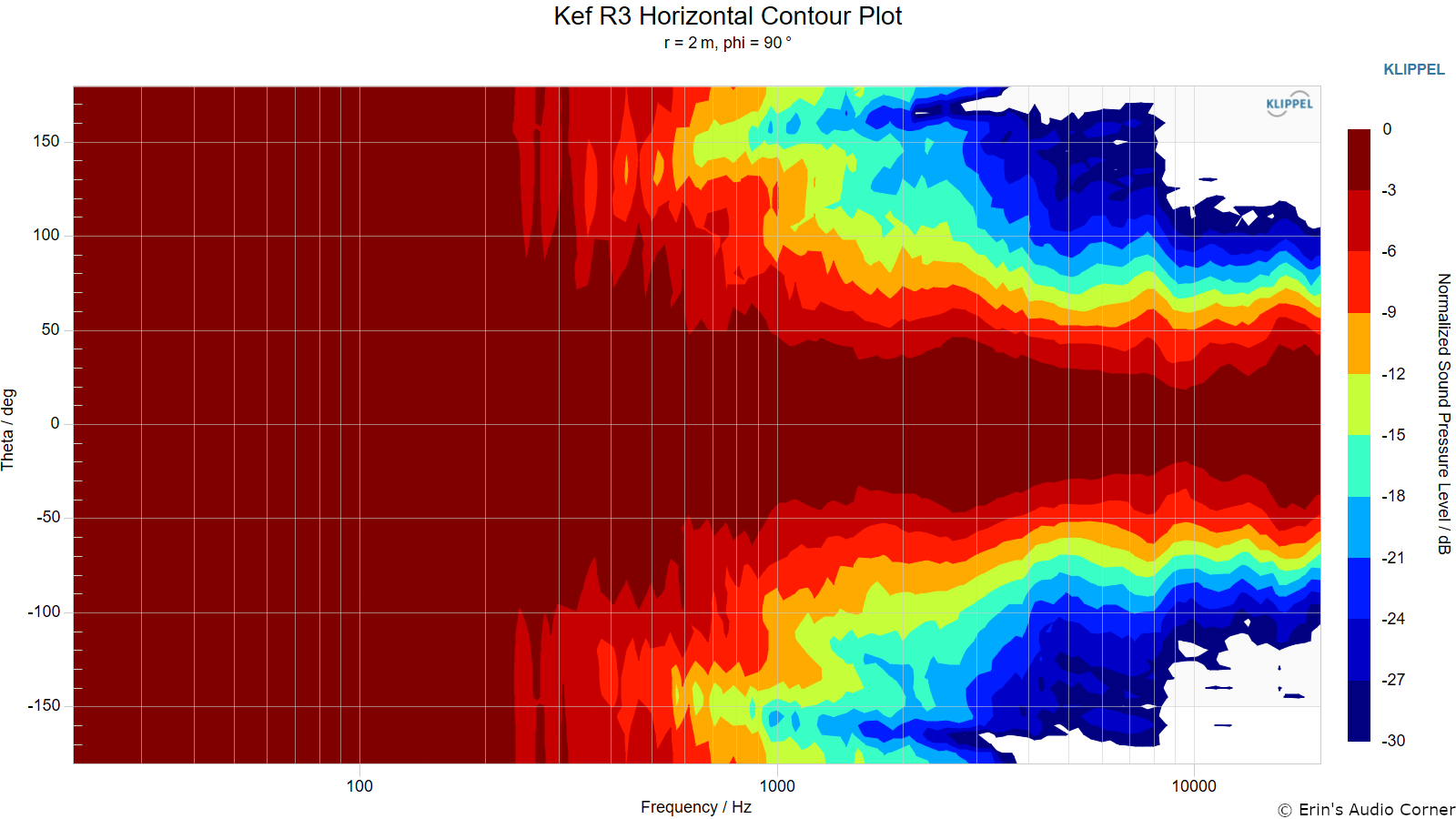
and the Mofi:
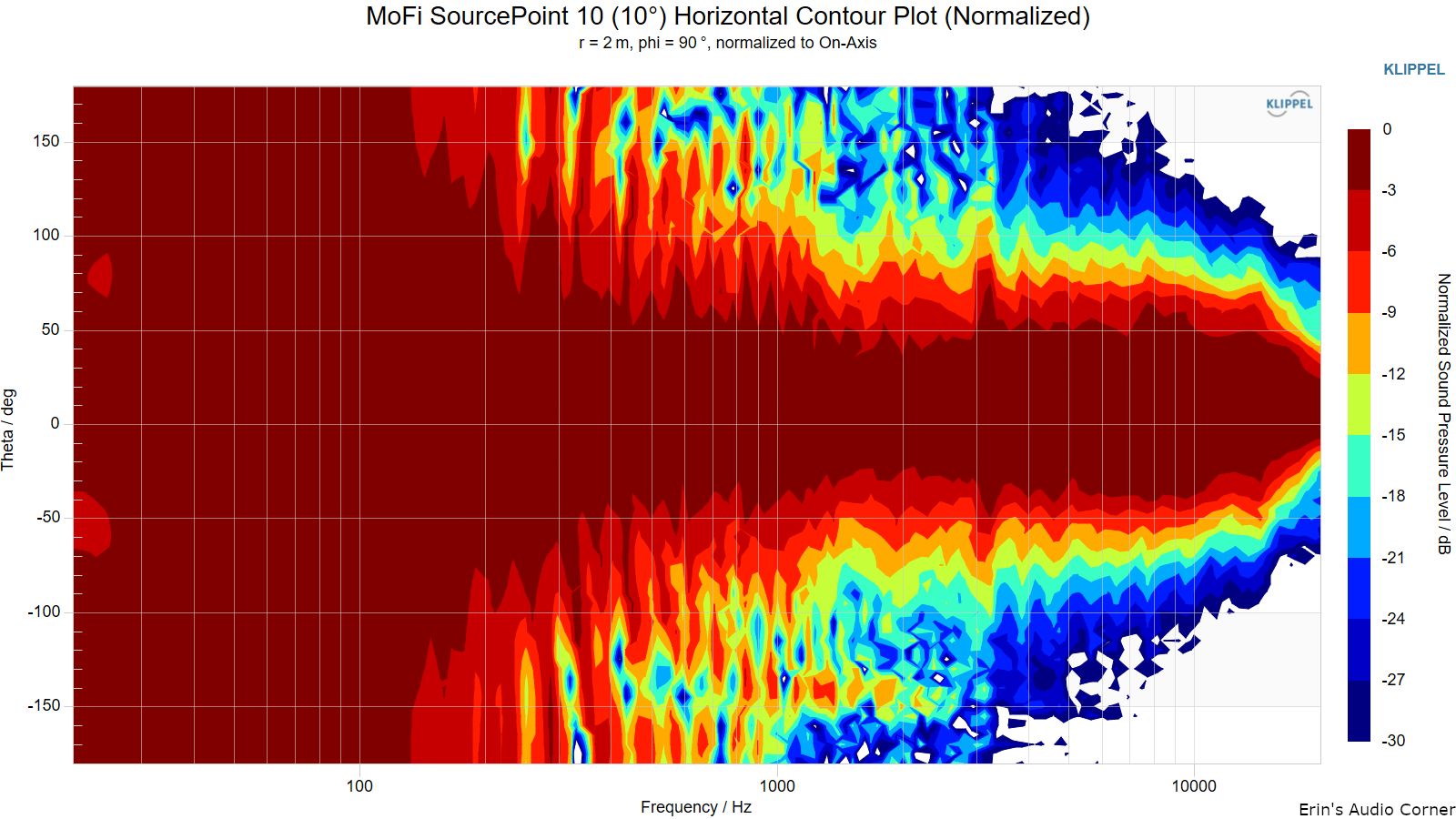
R3 from Erin's review:

and the Mofi:

MarkS
Major Contributor
- Joined
- Apr 3, 2021
- Messages
- 1,079
- Likes
- 1,515
Ascend Acoustics Sierra LX:Which passive speakers of similar size/price do you see as noticeably better than this?

SIERRA-LX PAIR
Our Latest And Greatest Bookshelf Monitor Class-leading bass extension, massive dynamics and midbass punch, high power handling, exceptionally wide and linear dispersion combined with some of the best measurements in the industry, our new LX is truly something quite unique and special. This is...
The KEF has waaaaaay fewer resonances.Is it me or is the R3 horizontal dispersion actually inferior to the SP10's? And by inferior I mean that the SP10's dispersion is more even over the frequency range of ~3k to ~12k:
R3 from Erin's review:

and the Mofi:

- Joined
- Jan 15, 2020
- Messages
- 6,904
- Likes
- 16,937
And the current R3 Meta is even smoother, can't wait for Erin or Amir to NFS it:The KEF has waaaaaay fewer resonances.
Source: KEF R Series with MAT white paper
- Joined
- Jan 15, 2020
- Messages
- 6,904
- Likes
- 16,937
I am not so sure there as being a 3-way design especially the new R3 Meta will possibly suffer less on the more audible multitone distortions, hope Erin will also measure it.Which passive speakers of similar size/price do you see as noticeably better than this? R3 is one I can maybe think of(note Erin's review of that seems is resolution), but that's the only one I can think of, and I would guess it can't play as loud.
tuga
Major Contributor
Is it me or is the R3 horizontal dispersion actually inferior to the SP10's? And by inferior I mean that the SP10's dispersion is more even over the frequency range of ~3k to ~12k:
R3 from Erin's review:

and the Mofi:

The MoFi directivity starts widening at a lower frequency. I wouldn't say it is superior, just different in the way it'll interact with boundaries.
- Thread Starter
- #28
I didn't notice the "10°" when I first saw this plot on his Patreon. And was afraid that the speaker could be faulty.The horizontal globe plot makes the 10 degree axis pretty obvious:
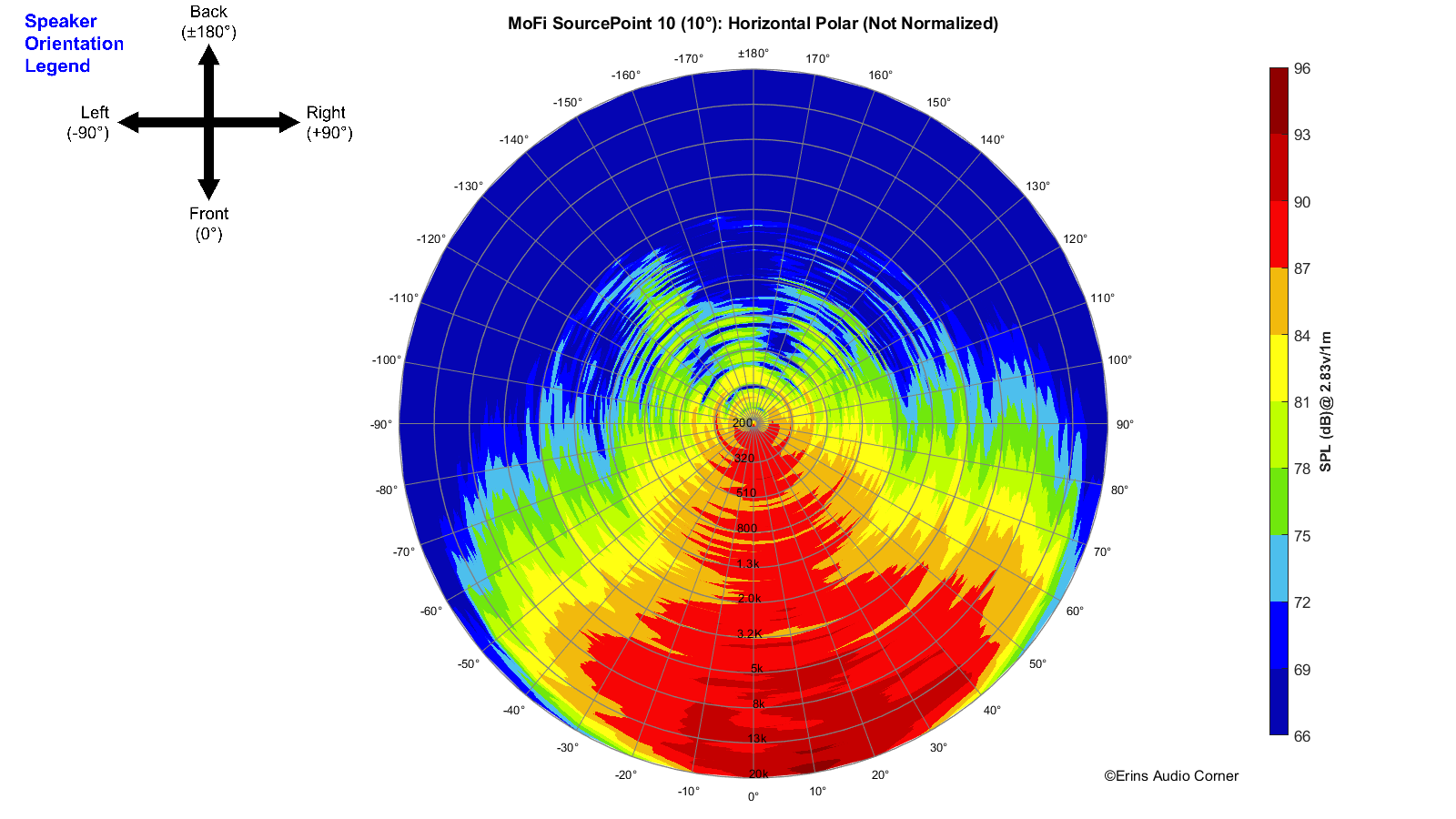
Anyway, while I'm OK with the 10° Spin, I don't understand why Erin did not present directivity beamwidth straight on-axis...
- Joined
- Jan 15, 2020
- Messages
- 6,904
- Likes
- 16,937
Exactly, weird choice, I initially wondered if the baffle is not symmetric.I didn't notice the "10°" when I first saw this plot on his Patreon. And was afraid that the speaker could be faulty.
Anyway, while I'm OK with the 10° Spin, I don't understand why Erin did not present directivity beamwidth straight on-axis...
cavedriver
Addicted to Fun and Learning
and by resonances do you mean all the "jaggies" on the dispersion graph, or do you mean something visible in which of the other graphs? Just trying to be sure.The KEF has waaaaaay fewer resonances.
cavedriver
Addicted to Fun and Learning
here's a thought for the question I will ask Andrew Jones at the next show he's at- in one of the interviews he talks about fixing all the bad flaws in speakers but allowing some "good flaws" to stay in. I gathered he meant things that make people like a speaker even if it is technically not ideal sound reproduction. I want to know what he was thinking of in that interview and how these flaws might have appeared in this speaker?
Having listened to this speaker for a while there are some traits that I can say I really like, but I would certainly not go as far as the one person who, speaking in general about speaker design, said "everything people like about speakers is distortion", or something similar. For example, this speaker and others in this price range exhibit 1~3% distortion over various bass frequencies, yet I can say that I really liked the way these speakers reproduce bass content over some others that clearly sound flawed to my ears. At the other end, I've been listening to Philharmonic Audio's new HT speakers and with their twin Purifi woofers they probably have very low bass distortion, yet I find them neutral but not terribly endearing.
Having listened to this speaker for a while there are some traits that I can say I really like, but I would certainly not go as far as the one person who, speaking in general about speaker design, said "everything people like about speakers is distortion", or something similar. For example, this speaker and others in this price range exhibit 1~3% distortion over various bass frequencies, yet I can say that I really liked the way these speakers reproduce bass content over some others that clearly sound flawed to my ears. At the other end, I've been listening to Philharmonic Audio's new HT speakers and with their twin Purifi woofers they probably have very low bass distortion, yet I find them neutral but not terribly endearing.
HarmonicTHD
Major Contributor
- Joined
- Mar 18, 2022
- Messages
- 3,326
- Likes
- 4,837
I think he is referring to the 86dB SPL Harmonic Distortion graph shown in the very first post of this thread.and by resonances do you mean all the "jaggies" on the dispersion graph, or do you mean something visible in which of the other graphs? Just trying to be sure.
I'm not, as far as I'm asked for a comment on that. Is it as to make it appear more flat than it actually is?Anyway, while I'm OK with the 10° Spin, ...
When it comes to a comparison with its contenders, Genelec, KEF, the only benefit would be more max output in bass, probably, and better efficiency. Gen/ and KEF are 3-way designs with their own merits that simply cannot be had with (any, even 15") 2-way, especially with coax.
As far as I've read it sinks into the market anyway. I have expected it would be repelled as an oddball. Not my mug of milk.
That, combined with all the jaggies on the spin, and the HD. They're all related.and by resonances do you mean all the "jaggies" on the dispersion graph, or do you mean something visible in which of the other graphs? Just trying to be sure.
fieldcar
Addicted to Fun and Learning
He mentions why 110 seconds into the video.I'm not, as far as I'm asked for a comment on that. Is it as to make it appear more flat than it actually is?
Can't accept to hide a problem, even it is inherent to the basic principle of a coax. KEF does a good job in mitigating such probs/ and their R/Q-driver range wasn't measured off axis as far as I can trust my recollection. Same with Genelec.He mentions why 110 seconds into the video.
Not that I'm too concerned about the dip (usually), but to alter the measuement procedure due to expected outcome doesn't feel right. An explanation (exculpation) should have done it.
Last edited:
Size depends, I wouldn't count these chunky things as true bookshelf speakers, they'll be used on stands, and at that point I might as well compare them to tower speakers.Which passive speakers of similar size/price
KEF R11 (3400€/pair) are an option, they have four 6.5" woofers with higher excursion (R5 with two 5.25" woofers has similar distortion and compression to the SourcePoint). R7 Meta are still rather pricy (5000€/pair), but unlike these they will come down in price quite significantly before long.
I still fail to see the point of 2-way coaxials. Sure, these are ok, but it's just an unneccesarily difficult way to make an ok speaker.
PeterOo
Member
Wow, did not know that site existed. Just scanning through the transcript saved 12 minutes of my life that otherwise would have been lost forever!He mentions why 110 seconds into the video.
- Thread Starter
- #39
He does, indeed.He mentions why 110 seconds into the video.
Just to clarify a bit: As stated in the video, Erin talked with Andrew Jones and the latter said that the SourcePoint has been specifically designed to perform slightly Off-Axis. Whatever some would or wouldn't be OK with that, Erin provided the full data for several cases, anyway:
Straight On-Axis:
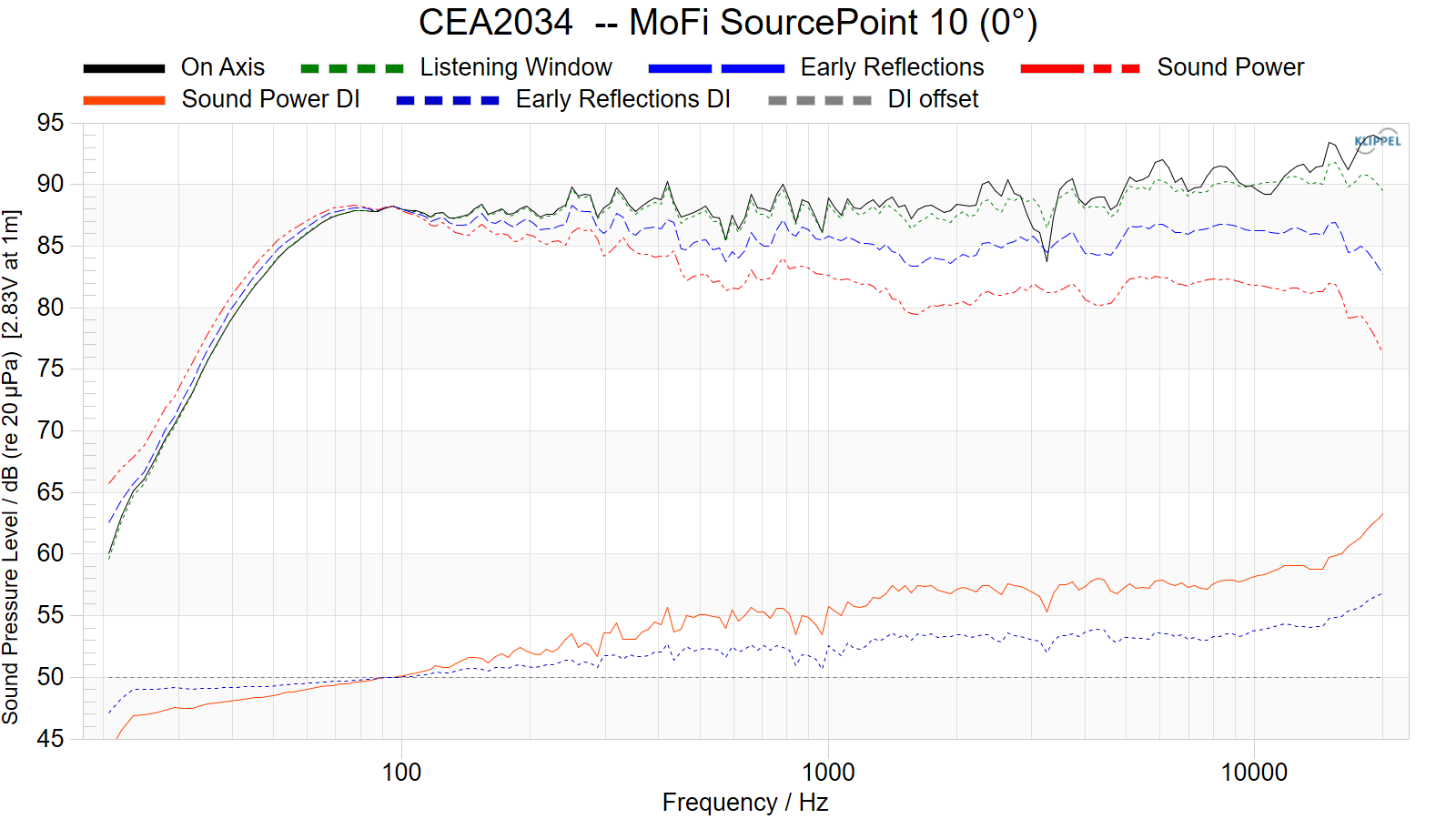
10° Off-Axis (recommended by the designer):
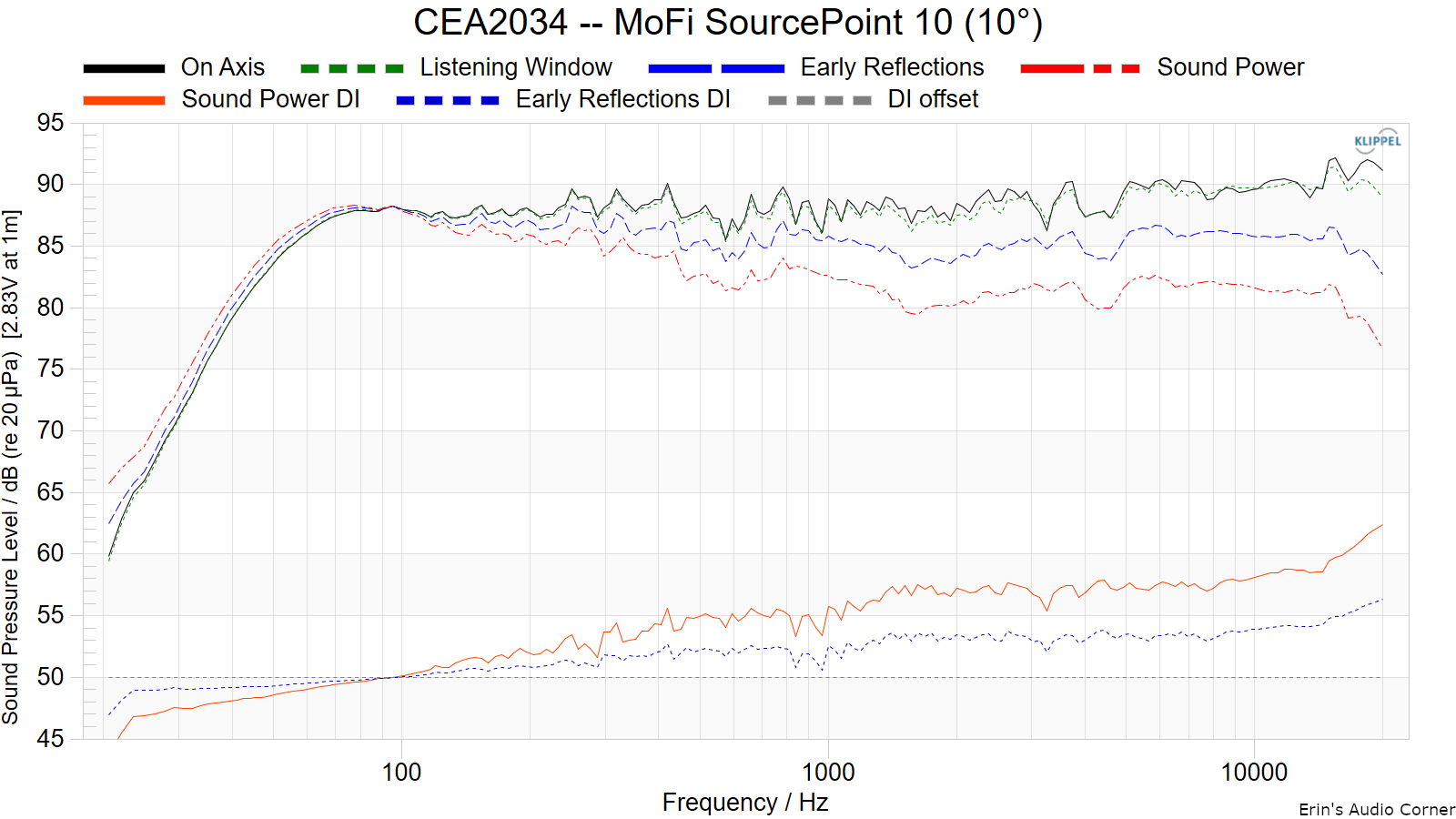
30° Off-Axis, jut in case...
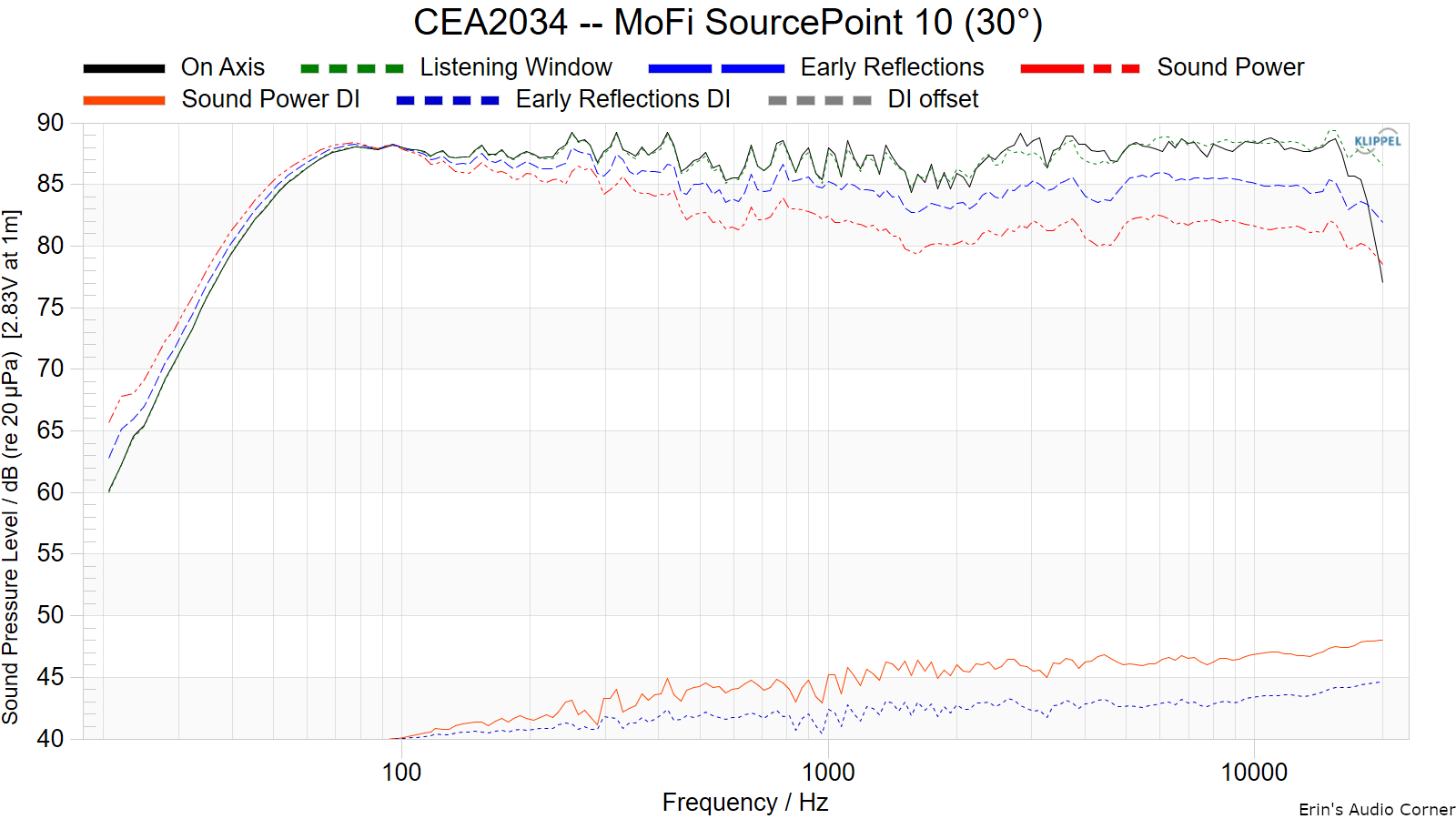
Better having more data than not enough in my book. It isn't like something would be hidden whatsoever. AFAIC, I just think that the horizontal directivity plot could be updated, as it should be presented at 0° for a more intuitive reading.
Apart from that, great and extensive review as usual.
cavedriver
Addicted to Fun and Learning
The thing that really gets me about all this is that I always start listening to speakers with both speakers pointed straight forward. This gives anywhere from 10 to 30 degree "off-axis" listening depending on room and setup. This came from my old Snells, a classic wide baffle design, which are best with the speakers straight forward or only slightly turned inwards towards the listener. Only recently have I considered turning speakers in towards the listener, and then only part way and never to where the speaker is directly on axis with the listener's location. It reminds me that I really need to be looking at the off-axis frequency responses more carefully when reviewing speakers, but also makes me really wonder, what are all of you doing when you approach a new pair of speakers?He does, indeed.
Just to clarify a bit: As stated in the video, Erin talked with Andrew Jones and the latter said that the SourcePoint has been specifically designed to perform slightly Off-Axis. Whatever some would or wouldn't be OK with that, Erin provided the full data for several cases, anyway:
Straight On-Axis:

10° Off-Axis (recommended by the designer):

30° Off-Axis, jut in case...

Better having more data than not enough in my book. It isn't like something would be hidden whatsoever. AFAIC, I just think that the horizontal directivity plot could be updated, as it should be presented at 0° for a more intuitive reading.
Apart from that, great and extensive review as usual.
Edit: For reference, the Linton's and the KEF Reference 1 Meta's, both show basically equivalent response at 0, 10, and 20 degrees off axis, so it comes down to preferred soundstage width I suppose for those speakers.
Last edited:
Similar threads
- Replies
- 13
- Views
- 2K
- Replies
- 396
- Views
- 26K
- Replies
- 1
- Views
- 1K
- Locked
- Replies
- 635
- Views
- 49K
